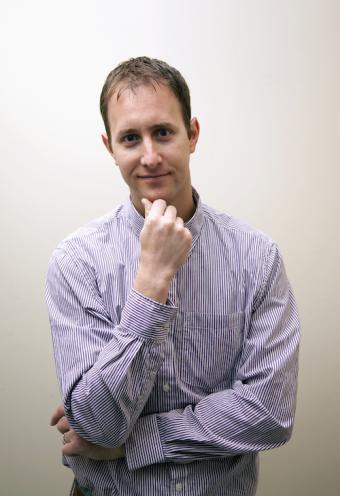
Are you interested in the direction that nonprofits are taking for the future? In this exclusive LoveToKnow interview, Randal C. Moss and David J. Neff, co-authors of The Future of Nonprofits: Innovate and Thrive in the Digital Age, explain how they see the landscape of nonprofits changing in the future due to innovations, social media and other factors.
Interview with David J. Neff and Randal C. Moss
LoveToKnow (LTK): How did you first get involved with nonprofit management?
David Neff and Randal Moss (DN & RM): We had both been at management positions at the American Cancer Society for several years, and really saw what positive things can happen when you have the correct awareness, structure and staffing in an organization. We also were prominent members of the American Cancer Society Future and Innovation Center, and helped the organization predict future trends. These things combined made us want to share our experience with the nonprofit community. The best way we could figure that out was through our book.

LTK: What are some of the projects that you are involved with?
DN & RM: David is very involved in a number of projects, including being the co-founder at HelpAttack!, running a non profit film festival called Lights. Camera. Help. and is a private consultant at David J. Neff Media. He is involved in Social Media Club Austin as well as other local ventures. Randal is involved in Ted-X Cincinnati, and advises an innovation based start-up called Idea-Rally, and owns TWMDC consulting services. He is also actively involved in a number of committees at the Jewish Federation of Greater Cincinnati.
LTK: What are some of the emerging trends for nonprofits?
DN & RM: We think the biggest change the nonprofit sector is going to see this decade has to do with how we track, score and analyze individual people in our organization. This could be anything from adding social media information to the fields in your donor database, to changing the way we set expectations for our employees. Of course, nonprofits have to want to change for this to happen.
The Impact of Social Media
LTK: What changes has social media had on the nonprofit world?
DN & RM: Social Media is no longer the wild west of marketing and communication channels. Instead, it has developed into an advanced marketing channel which most nonprofits are dipping their toes into, but not yet fully mastering. It has really made nonprofits aware of who they are, what people think of them and what the competition is doing. A true 360 degree business analyst's tool is what social media is for nonprofits.
About the Book
LTK: Can you tell us a little about the main themes in the book?

DN & RM: One of our favorite themes of the book is that nonprofits constantly hire people in their 20s and 30s who have amazing ideas, and then say no to all their great ideas. They are then amazed when they quit in frustration just months later. Nonprofits have to have a way to take in, evaluate and fund good ideas from their staff and volunteers.
Nonprofits need the lifeblood of innovation to change and move their mission into the future. No matter how much money they have in an endowment or how many programs they are executing, if they don't encourage innovative ideas and become aware of what's around them they will become as extinct as the dinosaurs.
LTK: Can you share a few examples of nonprofit innovation from the book?
DN & RM: The book is full of lots of examples of small, medium, and large organizations applying innovation principals to their organizational structure. We looked at Mobile Loaves and Fishes for example, and how they are leveraging innovative advertising and awareness tactics to gain traction within core communities. We also examined the American Cancer Society's internal innovation center, and dissected it to reveal what a top-flight innovation initiative looks like. We profile work being done by Best Friend's Animal Society and their work in social media. There are so many instances of excellence in the field that we intentionally selected organizations with varied missions and sizes to best connect with a diverse pool of readers.
LTK: What are some lessons learned from writing The Future of Nonprofits?
DN & RM: We learned that size of an organization is not a key factor in how innovative an organization can become.
We learned that a lot of small organizations are more innovative because they have to be out of necessity. Individuals have to multi-task and multi-role, and that wider exposure affords them extended visibility to both problems and solutions. When you have individuals seeing a 360 degree view from the ground level that is when you see innovation taking place in the form of connecting previously unrelated solutions and problems.
LTK: How can someone get a copy of the book?
DN & RM: The book is being sold in most major book stores presently. You can also order it from Amazon.com. A version is available for Kindle as well. You can also visit our website.
LTK: What else would you like our readers to know about The Future of Nonprofits?
DN & RM: The book is a results-oriented text. We took care to focus on results oriented case studies that are applicable to our readers and bypass extensive theoretical prose. The book provides real life tools, a road map to get readers started, and encouragement in multiple examples of success. The true value is that anyone can read and understand the core points, work through the exercises in the appendix, and begin to make an impact almost immediately.
Special Thanks
LoveToKnow thanks Randal C. Moss and David J. Neff for this interview and wishes them much success in all future endeavors! To keep up on David and Randal's latest news, become a fan of their Facebook page.







